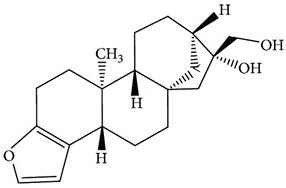Cafestol, C20H28O3, is a compound, specifically a diterpene alcohol, found in coffee beans. It is extracted during the coffee-brewing process and may be present in coffee beverages, depending on the preparation method. Consumption of cafestol in coffee has been shown to produce both positive and negative health effects. See also: Coffee; Terpene

Epidemiological studies have suggested that long-term coffee consumption is associated with a lower risk of type 2 diabetes. However, the bioactive compounds responsible for this effect were not known. More recently, researchers reported in the Journal of Natural Products (October 2015) that cafestol increases insulin secretion as well as glucose uptake in muscle cells, pointing toward a potentially protective effect. Less promising, cafestol is responsible for elevating blood levels of low-density lipoprotein (LDL) cholesterol, the so-called “bad” cholesterol, by 6–10 percent. See also: Blood; Cholesterol; Diabetes; Epidemiology; Glucose; Insulin; Type 2 diabetes
Therein lies the dilemma of whether to consume cafestol. Coffee drinkers do have a choice, because the amount of cafestol in a cup of coffee is determined by the brewing method. In general, coffee brewed using a paper filter contains much less cafestol than unfiltered coffee. The brewing temperature has little effect, so even cold-brewed coffee needs to be filtered or unfiltered depending on your cafestol preference.





